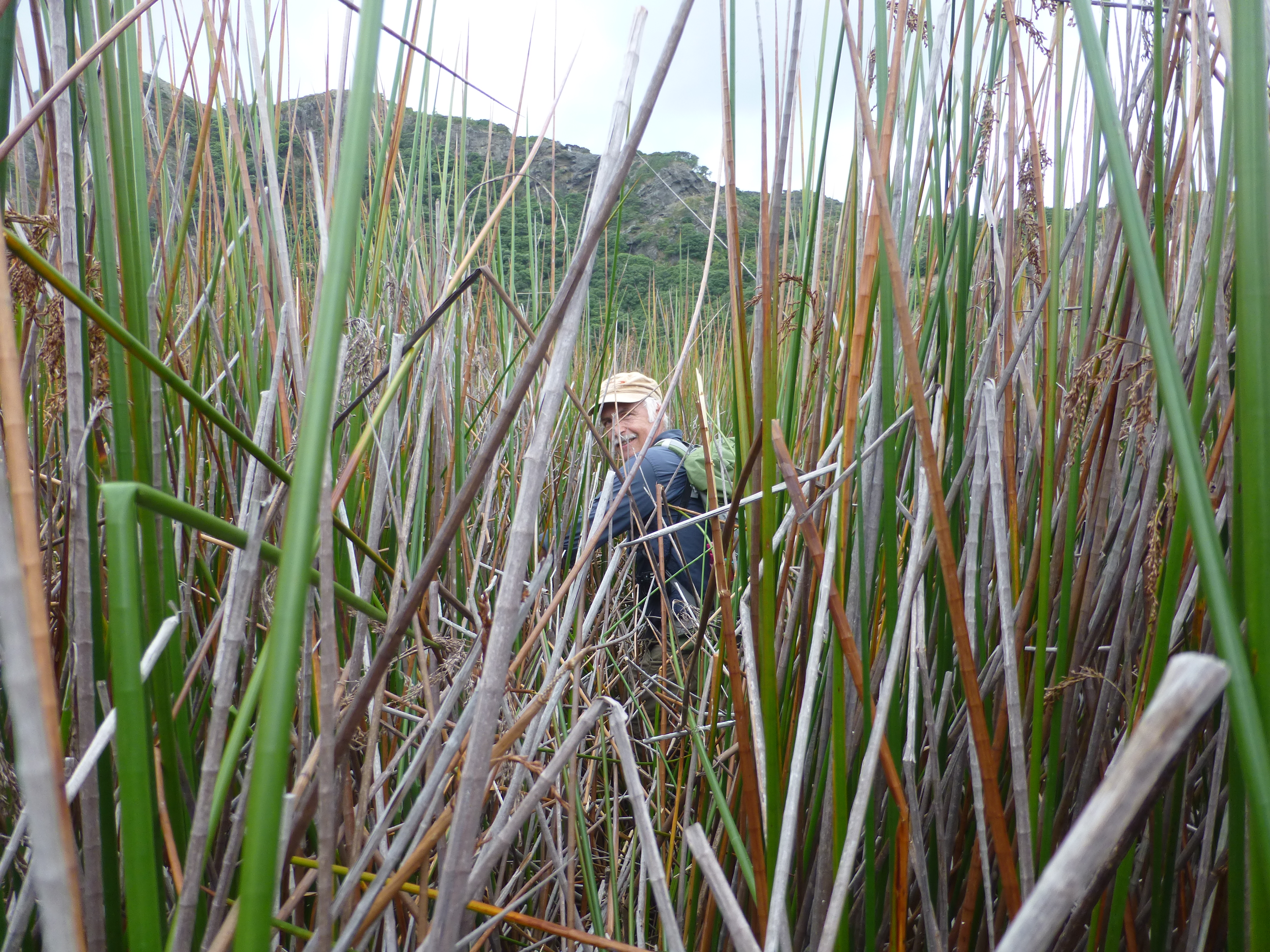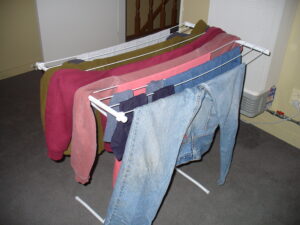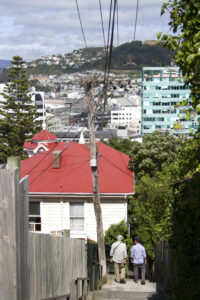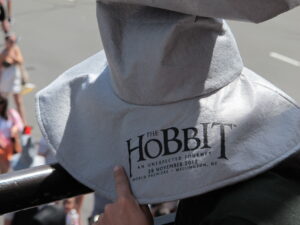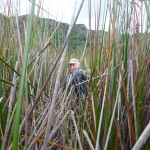
The spiky stalks of rushes – large grassy rods – rose over our heads, densely packed throughout the long stretch in front of us. Even in the cool afternoon, we sweated with the effort of moving forward, as if we were pushing through taffy or waist-high snow. What are we doing here? Would we be thrashing our way through this, or worse, till the next day? Were we just plain dumb?
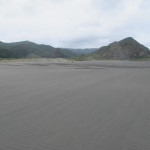
We had begun on the massive arc of black-sand beach at Whatipu, the southwestern tip of West Auckland at the mouth of Manukau Harbour. With the looming hills of the Waitakere ranges like a bowl around us, we followed a short track to the shore.
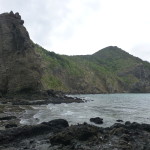
To the south, rocky headlands tapered off in the sandy gap that separated them from a huge pyramidal hill. We walked through to find rough seas and rocky shoals. Beyond the gap, sheer cliff-faces continued toward the east and the Harbour. A long island stretched away just a bit offshore.
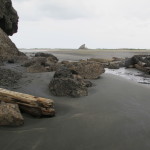
Our steps made deep hollows in the wet sand, which stuck to our feet and turned them sooty, as we moved around remnants of an old wharf.
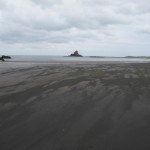
Returning eastward, we followed the curving shoreline for twenty minutes to a narrow, towering rock atop which a solar-lit column acted as lighthouse. To our right the ocean seemed to disappear, far past the sandy flat.
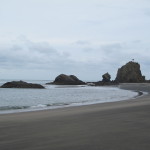
We continued toward a set of grassy dunes, looking for a way to reach a trail along the bluffs that led to several caves gouged by the sea many years ago. Normally, you reach that trail starting at the same point where we parked for the beach access. But the bluffs and the caves just didn’t look very far away across an apparently navigable plain.
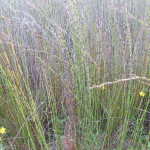
We were wrong. At first, we moved quickly on packed sand amid grassy tufts. But we soon found ourselves deep in reed-like plants, possibly the zebra rush, green with small black flecks, growing at least chest high. We were also walking on a mulch of dead rushes that squooshed under our feet and occasionally gave way to ankle depth. There were no longer any paths, except for an occasional gap in the green rods.
At least the rushes opened up as we marched on, like an endless set of beaded screens in a doorway, and quickly closed up behind us as if we were never there. This wasn’t too bad, we thought, for we were still moving quickly toward those bluffs.
But then we reached a denser swath of taller rushes. Now we had to muscle through them slowly, step by step, grabbing handfuls to keep us steady. Sometimes we would stomp on a bunch to get a foothold and sometimes we had to scale a waist-high mass of living and dead stalks cross-hatched together. We considered turning back, but the goal seemed closer than the starting point.
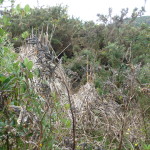
We aimed for the slightly higher ground ahead of us. These mounds made the going somewhat easier, as scrubby bushes supplanted the rushes and opened up short passageways across the still mulchy ground. We just needed to avoid the thickets of gorse, bushes with needle-like spikes and anomalously pleasant pea-like yellow flowers. But then it was back down into the rushes.
We soon encountered widespread grasses of a different type. These were slightly thicker, tubular, all green not black flecked, and taller than our heads. At first they proved impenetrable, the tall shafts locking together like a thatched gate as we stepped on them. We tried to bypass them, looking for some easier passageway through. But eventually we had no choice but to go right through them. We changed techniques: instead of trying to press them down in front of us, we used upward groin-kicks to break the thatching. Hard work, but once again we were making progress.
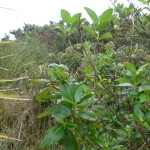
So it continued, as we maneuvered our way along, unhurriedly punching through the rushes – or edging along bushes where we could to skirt them, mounting the few patches of high ground, or snaking through any dividing lines between the different types of rushes.
Finally, after over an hour and a half of this, we pulled ourselves up a slope to the dark rocky bluffs. In front of us, the wide-open cave mouth laughed incredulously.
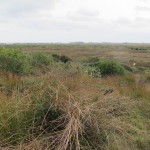
We felt no real triumph here, for we were displeased with ourselves for plowing through the landscape with a heavy foot. We reckoned we had only damaged a tiny portion of the widespread rushes and grasses; no trace of our passage was even visible. Our passageway was already filled with a mix of live and dead strands so our impact would likely be minimal. But we knew we did wrong.
Yet we did re-learn something about ourselves. To get through this terrain, we needed to be resourceful, observant, and cunning as to nature’s ways – as well as fit enough to keep the effort going.
And that’s a lot like dealing with a life of travel, however pleasurable that life may be. Sometimes we’re on a well-defined, touristy path. But, as with our rush-filled walk, we often face thickets of confusion, unexpected obstacles and physical challenges – all demanding the best we can bring. Or is that, perhaps, like life in general?
(Also, for more pictures from New Zealand, CLICK HERE to view the slideshow at the end of the New Zealand itinerary page.)


